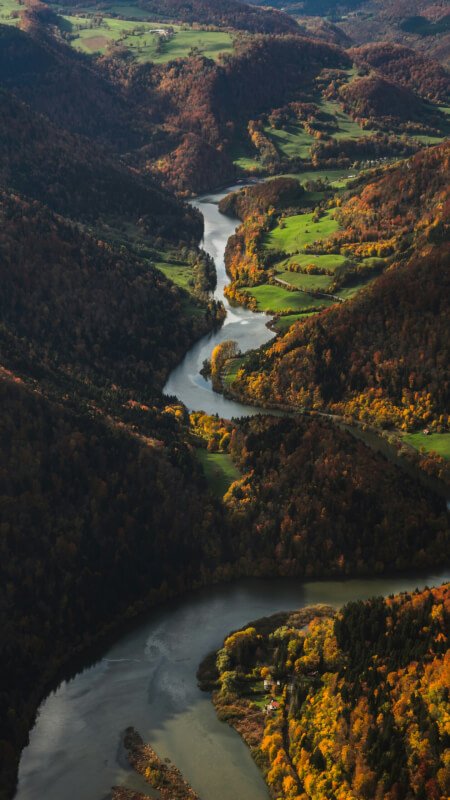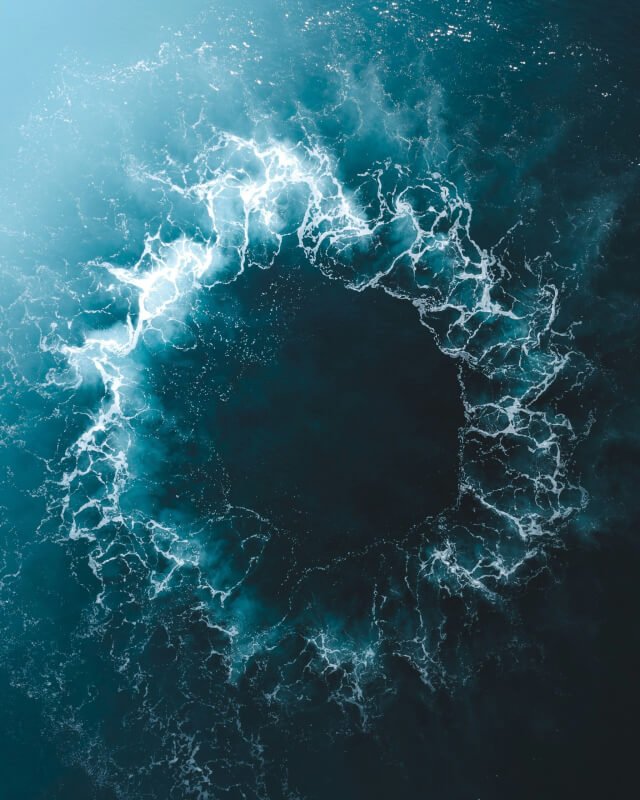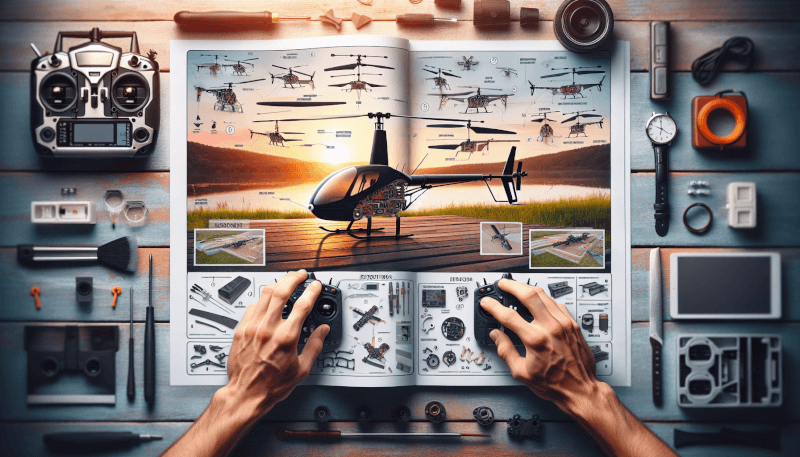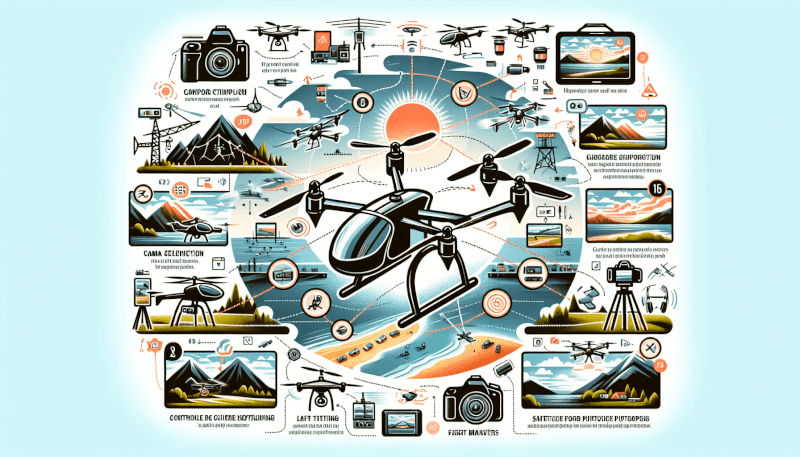Imagine being able to capture breathtaking aerial shots without ever leaving the ground. With your RC helicopter, you have the power to take your photography skills to new heights – quite literally! In this article, we will share some expert tips and tricks on how to harness the potential of your remote-controlled helicopter to capture stunning photos. From choosing the right camera equipment to mastering flight maneuvers, you will soon be on your way to creating captivating aerial images that will leave your friends and family in awe. So, fasten your propellers and get ready to explore the world of aerial photography with your trusty RC helicopter!
Choose the Right RC Helicopter
Consider the size and weight of the helicopter
When choosing an RC helicopter for aerial photography, it is important to consider the size and weight of the helicopter. A smaller and lighter helicopter will be easier to maneuver and control, especially in tighter spaces. However, a larger helicopter may be more stable and capable of carrying a heavier payload, such as a high-quality camera. Consider your specific photography needs and choose a helicopter that is suitable for your intended use.
Look for stability and maneuverability features
Stability and maneuverability are crucial factors to consider when selecting an RC helicopter for aerial photography. Look for features such as gyro stabilization systems, which help to keep the helicopter steady in flight and reduce vibrations that could affect the quality of your photos. Additionally, choose a helicopter with responsive and precise controls that allow you to easily maneuver and position the aircraft for optimal shots.
Ensure it has a good flight range
Another important consideration is the flight range of the RC helicopter. A good flight range allows you to explore different aerial perspectives and capture stunning photos from various angles. Make sure the helicopter you choose has a sufficient flight range for your needs, taking into account factors such as the distance you plan to fly from your control station and any potential obstacles or interference in the area.
Check the camera compatibility
Before making a final decision on your RC helicopter, ensure that it is compatible with the camera you plan to use for aerial photography. Not all helicopters are designed to accommodate specific cameras, so it is important to check the camera compatibility before making a purchase. Consider factors such as weight, mounting options, and any additional accessories that may be required to attach the camera securely to the helicopter.
Understand the Basics of Aerial Photography
Learn about composition and framing
Composition and framing are essential elements of any photograph, and aerial photography is no exception. To capture stunning photos with your RC helicopter, it is important to learn about composition techniques and how to frame your shots effectively. Consider the rule of thirds, leading lines, and balanced compositions to create visually appealing images.
Understand the rule of thirds
One of the fundamental principles of photography is the rule of thirds. This rule suggests that you should imagine a grid divided into nine equal parts and place the important elements of your photo along these gridlines or at their intersections. When using your RC helicopter for aerial photography, keeping the rule of thirds in mind can help you create balanced and visually pleasing compositions.
Master different camera settings
To capture stunning photos, it is crucial to understand and master different camera settings. Learn about aperture, shutter speed, ISO, and white balance, as these settings can greatly affect the outcome of your aerial photographs. Experiment with different settings to achieve the desired effect and learn how to control exposure, depth of field, and motion blur.
Get familiar with aerial photography techniques
Aerial photography requires specific techniques to ensure the best results. Understanding techniques such as aerial panoramas, aerial orbits, and aerial tracking shots can help you capture dynamic and captivating images. Take the time to study and practice these techniques to elevate your aerial photography skills.

Prepare for the Flight
Check the weather conditions
Before taking your RC helicopter for a flight, it is essential to check the weather conditions. Strong winds, rain, or extreme temperatures can negatively impact the performance and stability of your helicopter, as well as the quality of your photos. Choose a day with favorable weather conditions, preferably when the winds are calm, to ensure a successful and enjoyable aerial photography experience.
Choose a suitable location
Selecting the right location is crucial for capturing stunning photos with your RC helicopter. Look for open spaces, such as parks or fields, where you have ample room to fly without the risk of damaging your helicopter or causing harm to others. Consider the scenery and surroundings of the location to find picturesque areas that will enhance the visual impact of your aerial photographs.
Ensure proper battery charging
Before any flight, it is important to ensure that your RC helicopter’s batteries are fully charged. Insufficient battery power can lead to unexpected crashes or an early end to your aerial photography session. Follow the manufacturer’s instructions for charging your batteries and carry spare batteries if necessary, to ensure longer flight times and uninterrupted photography sessions.
Perform pre-flight checks on your helicopter
Performing pre-flight checks is an essential step in ensuring a safe and successful flight. Before taking off with your RC helicopter, inspect the aircraft for any damage or loose parts. Check the rotor blades, landing gear, and all connections to make sure everything is secure and functioning properly. Confirm that the camera is securely mounted and calibrated for optimal performance. Additionally, ensure that your remote control is fully charged and functioning correctly.
Mount and Stabilize the Camera
Select a high-quality camera
The choice of camera plays a significant role in capturing stunning photos with your RC helicopter. Look for a high-quality camera that meets your specific photography needs and offers features such as high resolution, manual controls, and the ability to capture RAW images. Consider the weight of the camera and ensure that it is compatible with your RC helicopter.
Attach the camera securely to the helicopter
To ensure the safety of your equipment and the quality of your photos, it is crucial to securely attach the camera to your RC helicopter. Use the proper mounting equipment recommended by the manufacturer to ensure a stable and secure attachment. Double-check all connections and test the stability of the camera before taking off for your aerial photography session.
Use stabilization tools or gimbals for smoother shots
One of the challenges of aerial photography is capturing stable and smooth shots, as the helicopter is subject to vibrations and movements in the air. Using stabilization tools or gimbals can greatly improve the stability of your camera and reduce unwanted movements. These tools help counteract the motion of the helicopter, resulting in smoother and more professional-looking photos.
Calibrate the camera for optimal performance
Before each flight, it is important to calibrate the camera to ensure optimal performance. Follow the manufacturer’s instructions for calibrating the camera’s settings and make necessary adjustments based on the lighting conditions and specific requirements of your aerial photography session. Proper calibration will help you achieve accurate exposure and white balance, resulting in better-quality photos.

Plan Your Shots
Decide on the type of shots you want
Before taking off with your RC helicopter, it is important to have a clear vision of the type of shots you want to capture. Do you want to focus on landscapes, architecture, or action shots? Having a plan in mind will help you make the most of your flight time and capture the desired photographs.
Scout the location beforehand
Take the time to scout the location before your actual aerial photography session. This allows you to familiarize yourself with the area, identify potential photography spots, and plan your flight path accordingly. Look for interesting features, such as leading lines, bodies of water, or unique landmarks, that can enhance the composition of your aerial photographs.
Consider lighting conditions and time of day
Lighting conditions play a crucial role in photography, and aerial photography is no exception. Choose the right time of day when the lighting is soft and flattering to capture vibrant and detailed images. Golden hours, which are the hours around sunrise and sunset, often offer the best lighting for aerial photography. Consider the direction of light and how it will impact the shadows and highlights in your photos.
Create a shot list or storyboard for reference
To ensure that you capture all the desired shots, create a shot list or storyboard for reference. This will help you stay organized during your aerial photography session and ensure that you don’t miss any important shots. Include specific compositions, angles, and focal points that you want to capture. Having a plan will make the most of your flight time and increase the chances of capturing stunning photos.
Take Safety Precautions
Fly within legal regulations and restrictions
When flying your RC helicopter for aerial photography, it is crucial to comply with all legal regulations and restrictions in your area. Familiarize yourself with the local laws and guidelines for flying drones or RC aircraft, including any height or distance restrictions. It is important to respect the privacy and safety of others while capturing your aerial photographs.
Avoid crowded areas and sensitive locations
To ensure the safety of others and the success of your aerial photography session, it is important to avoid crowded areas and sensitive locations. Flying your RC helicopter in crowded spaces can be hazardous and may result in injuries or damage to property. Similarly, be mindful of sensitive locations, such as airports, government buildings, or private properties, where flying may be restricted or prohibited.
Maintain a safe distance from people and objects
To prevent accidents and potential damage, always maintain a safe distance from people and objects while flying your RC helicopter. Keep a reasonable distance from people, buildings, and other obstacles to avoid collisions or unwanted interactions. Be mindful of your surroundings and anticipate any potential hazards that may arise during your flight.
Be mindful of potential hazards and obstacles
Before taking off with your RC helicopter, survey the area for any potential hazards or obstacles that could interfere with your flight. Look out for trees, power lines, or other elements that could pose a risk to your helicopter and prevent you from capturing the desired shots. Being aware of potential hazards will help you plan your flight path and minimize the chances of accidents or equipment damage.

Master Flying Techniques
Practice basic flight maneuvers
To capture stunning photos with your RC helicopter, it is important to master basic flight maneuvers. Practice flying in different directions, controlling altitude, and smoothly transitioning between movements. Learning to hover stably and maintain a steady flight will greatly contribute to capturing clear and well-composed photos.
Learn to control altitude, direction, and speed
Mastering control over altitude, direction, and speed is crucial for capturing dynamic and visually stunning aerial photographs. Practice adjusting the altitude of your RC helicopter to achieve different perspectives and compositions. Experiment with different flight patterns, such as straight lines, curves, or circles, to add visual interest to your photos. Understand how speed affects motion blur and how to control the speed to achieve the desired effect.
Experiment with different flight patterns and angles
Aerial photography offers a unique opportunity to explore different flight patterns and angles, resulting in diverse and captivating photos. Experiment with flying high above your subject, circling around it, or capturing it from a low angle. Adjusting your flight patterns and angles can dramatically change the perspective and impact of your aerial photographs.
Develop smooth and stable flying skills
Smooth and stable flying skills are essential for capturing clear and sharp aerial photographs. Practice maintaining a steady hover and flying smoothly in different directions. Avoid abrupt movements and take your time to frame your shots properly. Developing smooth and stable flying skills will help you capture professional-quality photos with your RC helicopter.
Use Remote Control Features
Utilize the remote control’s camera controls
Most RC helicopters come with remote controls that offer various camera controls. Take the time to familiarize yourself with the camera controls on your remote control, such as adjusting the zoom, focus, or exposure settings. Being able to control these settings remotely will allow you to fine-tune your photos and capture the desired shots without having to land the helicopter.
Take advantage of autopilot or follow-me modes
Some RC helicopters offer autopilot or follow-me modes, which can be highly beneficial for aerial photography. Autopilot modes allow the helicopter to fly in a predetermined path or hold a specific position, giving you more control over the composition of your photos. Follow-me modes enable the helicopter to track and follow a particular subject, ensuring that it stays in the frame while you focus on capturing the shot.
Adjust camera settings remotely for varied perspectives
In addition to controlling the camera settings on your remote control, consider adjusting the settings remotely to capture varied perspectives. Experiment with different focal lengths, apertures, or shutter speeds to create different visual effects. Adjusting the camera settings remotely allows you to adapt to changing lighting conditions or capture different subjects with ease.
Program and execute automated flight paths
Some advanced RC helicopters offer the ability to program and execute automated flight paths. With this feature, you can pre-set specific flight paths or waypoints for your helicopter to follow, ensuring consistent and accurate aerial photographs. Automated flight paths can be particularly useful for capturing aerial panoramas or time-lapse sequences, as they eliminate the risk of human error and provide precise control over the flight path.

Edit and Enhance Your Photos
Transfer the captured photos to your computer
After your aerial photography session, transfer the captured photos from your RC helicopter to your computer. Connect the camera or memory card to your computer using the appropriate cables or card readers. Create designated folders to organize your photos and ensure that you have a backup of your images.
Use photo editing software for enhancements
To bring out the best in your aerial photographs, use photo editing software to make enhancements and adjustments. Adjust brightness, contrast, and saturation levels to enhance the overall appearance of your photos. Crop or straighten the composition if needed to improve the visual balance. Additionally, consider using advanced editing techniques, such as HDR or exposure blending, to expand the dynamic range of your photos.
Crop and adjust the composition if needed
Aerial photographs often benefit from slight adjustments to the composition or framing. Use photo editing software to crop the image and remove any distractions or unwanted elements. Consider different aspect ratios or crop sizes to create a more balanced and visually appealing composition. Experiment with different cropping techniques to find the perfect composition for each photo.
Apply filters or effects for desired results
For a creative touch, consider applying filters or effects to your aerial photographs. Experiment with black and white conversions, sepia tones, or vintage effects to add a unique aesthetic to your photos. However, be mindful not to overdo the editing process. Maintain a balance between enhancing the photo and preserving its natural beauty.
Share and Showcase Your Work
Create an online portfolio or social media account
Once you have edited and finalized your aerial photographs, it’s time to share and showcase your work. Create an online portfolio or social media account dedicated to your aerial photography. Use this platform to display your best photos, provide descriptions or stories behind each image, and engage with an audience interested in aerial photography.
Engage with the aerial photography community
To further enhance your skills and gain inspiration, engage with the aerial photography community. Join online forums, groups, or communities specifically for aerial photographers. Share your work, ask for feedback, and participate in discussions. Connecting with fellow enthusiasts and professionals can help you improve your techniques, learn new tricks, and stay updated with the latest trends in aerial photography.
Participate in photo contests and exhibitions
Test your skills and gain recognition by participating in photo contests and exhibitions. Look for contests or exhibitions that specifically focus on aerial photography. Submit your best shots to these competitions and showcase your work to a broader audience. Participating in contests and exhibitions can provide valuable exposure, feedback, and opportunities for networking within the photography industry.
Seek feedback and learn from other photographers
Never stop learning and improving your aerial photography skills. Seek feedback from other photographers, both professionals and fellow enthusiasts. Ask for constructive criticism on your photos and be open to suggestions for improvement. Learning from others and continuously seeking new perspectives can greatly enhance your abilities as an aerial photographer.
Capturing stunning photos with your RC helicopter requires careful planning, practice, and a combination of technical skills and creativity. By choosing the right RC helicopter, understanding the basics of aerial photography, preparing for your flights, mastering flying techniques, utilizing remote control features, editing your photos, and sharing your work, you can elevate your aerial photography to new heights. Take the time to explore different locations, experiment with camera settings and flight patterns, and never stop honing your skills as an aerial photographer. With dedication and a passion for capturing the beauty of the world from above, you can create breathtaking images that will leave a lasting impression.



